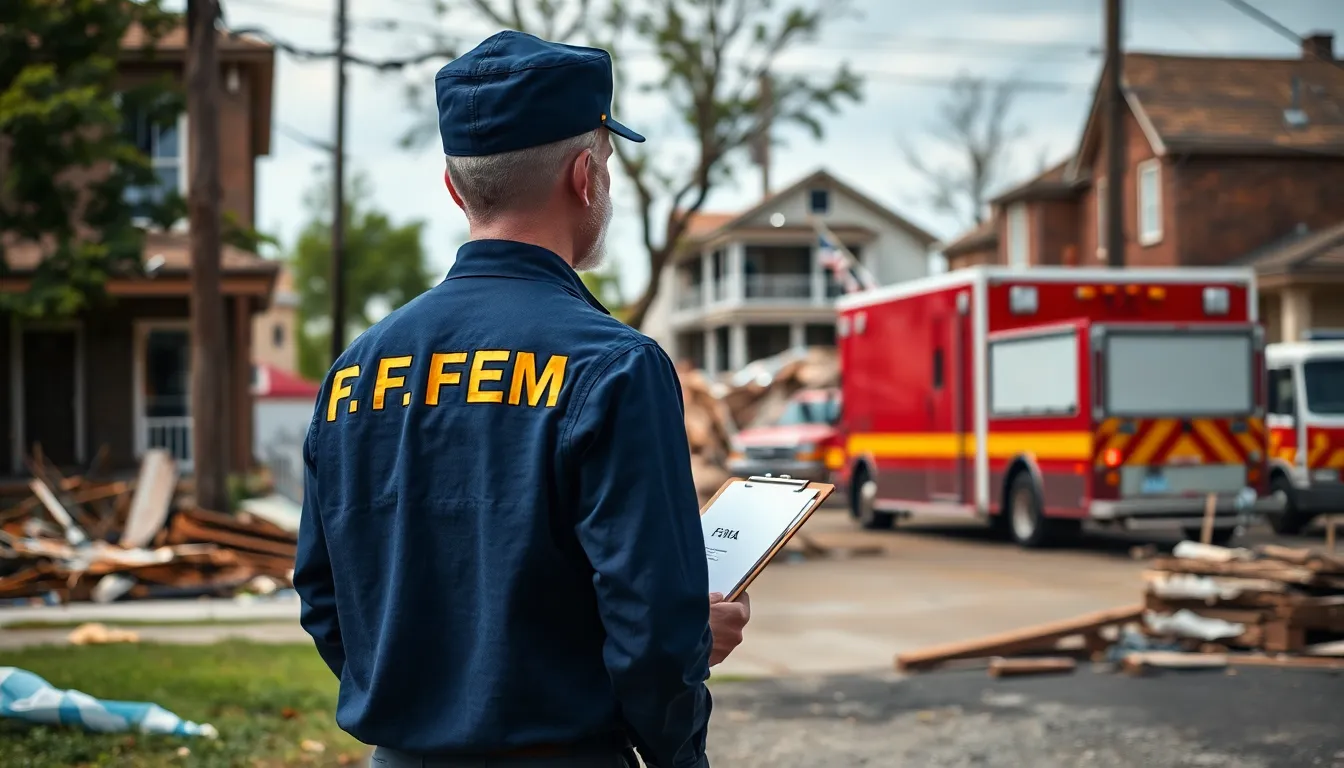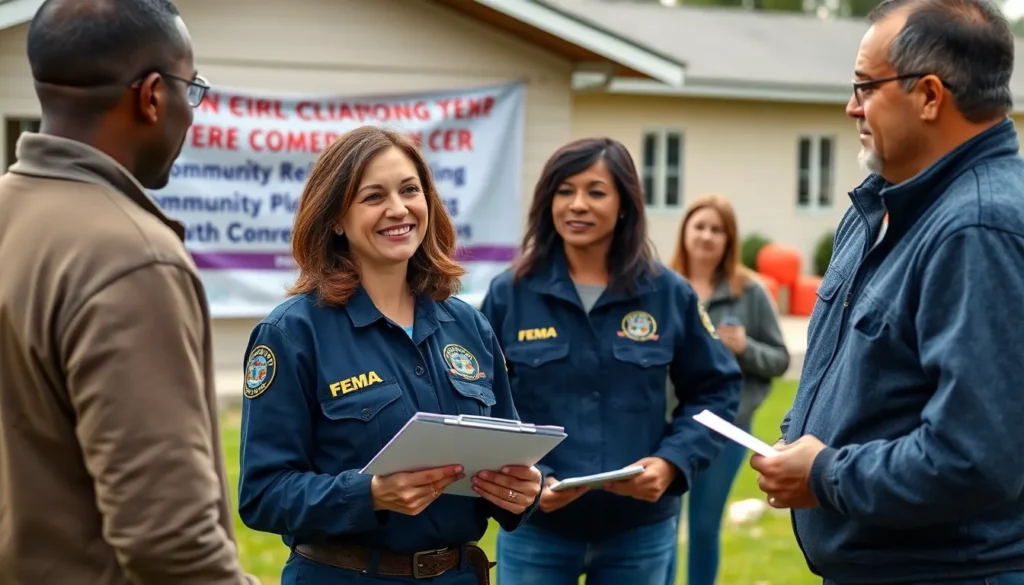In the wake of natural disasters, the need for dedicated professionals to aid recovery efforts becomes crucial. FEMA disaster relief job openings provide a unique opportunity for individuals looking to make a real difference in their communities. These positions not only offer a chance to assist those in need but also allow candidates to contribute to the broader mission of disaster preparedness and response.
With various roles available, from logistics to community outreach, FEMA seeks passionate individuals ready to tackle the challenges that come with disaster recovery. As the demand for skilled workers grows, now’s the perfect time to explore these rewarding career paths and join a team committed to helping others during their most vulnerable moments.
Table of Contents
ToggleOverview of FEMA Disaster Relief Job Openings
FEMA disaster relief job openings provide essential opportunities for individuals seeking to contribute to national recovery efforts. Roles vary significantly, addressing different needs in disaster response and recovery.
Types of Positions Available
- Logistics Specialists manage supply chains and coordinate the delivery of essential goods and services.
- Community Outreach Coordinators engage with affected populations, providing information and resources.
- Disaster Recovery Specialists assess damage, determining eligibility for assistance programs.
- Public Information Officers communicate updates and safety information through multiple channels.
Application Process
Candidates can apply online through the USAJOBS portal. Positions often require a resume and a tailored cover letter. Those meeting basic qualifications may undergo interviews and background checks.
Key Requirements
Qualifications generally include:
- Education: A bachelor’s degree in fields like emergency management, public administration, or social sciences.
- Experience: Prior experience in disaster management or community engagement enhances competitiveness.
- Skills: Strong communication, analytical thinking, and problem-solving abilities are critical.
Hiring Trends
Hiring trends indicate a growing demand for skilled workers in disaster management. Annual fluctuations in job openings correlate with seasonal disaster patterns, highlighting the need for readiness year-round.
FEMA continues to prioritize recruitment efforts, seeking dedicated individuals ready to support communities facing adversity.
Types of FEMA Disaster Relief Positions

FEMA offers a diverse array of job opportunities to meet the varying needs of disaster relief efforts. Positions can typically be categorized into two main types: temporary and permanent roles, as well as field and office positions.
Temporary vs. Permanent Roles
Temporary roles provide short-term employment during specific disaster response efforts, often lasting from a few months to a year. These roles include positions like disaster recovery specialists and logistics coordinators. Such jobs allow individuals to contribute meaningfully during urgent situations while gaining valuable experience in disaster management.
Permanent roles, on the other hand, offer long-term employment. Positions such as public information officers and community outreach coordinators fall into this category. Employees in permanent roles focus on ongoing preparedness, planning, and community engagement. These positions require sustained commitment to FEMA’s mission and often come with opportunities for career advancement.
Field vs. Office Positions
Field positions operate directly within affected communities, addressing immediate needs on the ground. Roles such as disaster assistance employees and housing inspectors require personnel to engage with disaster survivors, assess damage, and provide necessary support. These positions demand mobility and adaptability, as they often involve unpredictable work environments.
Office positions, in contrast, support disaster relief efforts from behind the scenes. Jobs like program analysts and administrative staff focus on planning, coordination, and logistics. Employees in these roles contribute to the strategic aspects of disaster response, ensuring resources are allocated effectively and operations run smoothly. Both types of positions are essential for a comprehensive disaster response team.
Application Process for FEMA Jobs
The application process for FEMA jobs is structured to ensure candidates present their qualifications effectively. Following specific steps increases the likelihood of securing a position.
Preparing Your Resume
Crafting a strong resume is essential. It must highlight relevant experience in disaster management or related fields, exhibiting specific accomplishments. Inclusion of key skills, such as communication, logistics, and problem-solving, enhances the application. Tailoring the resume to align with the job description raises visibility among hiring officials. Utilizing clear formatting and bullet points improves readability, helping applicants stand out in a competitive field.
Navigating the Online Application Portal
The USAJOBS portal serves as the primary platform for FEMA job applications. Candidates should create an account and complete their profile to streamline the application process. It’s important to search for FEMA positions using keywords related to desired roles. Each job posting includes specific application requirements, including necessary documents like cover letters and transcripts. Submitting a complete application promptly often leads to a more favorable outcome, as many jobs may have expedited timelines based on disaster response needs.
Benefits of Working with FEMA
Working with FEMA offers numerous advantages, from competitive compensation to opportunities for professional growth. Employees contribute to vital disaster response efforts while enjoying a range of benefits.
Competitive Salaries and Benefits
FEMA provides competitive salaries that reflect the importance of disaster management roles. Salaries typically range from $40,000 to over $100,000 annually, depending on the position, experience, and education level. Employees receive comprehensive benefits, including:
- Health Insurance: Access to medical, dental, and vision plans for employees and their families.
- Retirement Plans: Participation in the Federal Employees Retirement System (FERS), providing financial security for future years.
- Paid Time Off: Generous vacation, sick leave, and holiday benefits allow employees to maintain work-life balance.
- Flexible Work Arrangements: Opportunities for remote work or flexible hours, improving job adaptability and satisfaction.
Opportunities for Career Advancement
FEMA prioritizes the professional development of its employees, offering substantial opportunities for career advancement. Employees can access various training programs aimed at building skills relevant to disaster relief and emergency management. Key advancement opportunities include:
- Promotions within FEMA: Clear pathways exist for employees to advance into higher-level roles, such as project managers or program directors, based on performance and experience.
- Skill Development Workshops: Regular workshops enhance competencies, focusing on areas such as crisis communication and logistics coordination.
- Networking Events: Employees can attend events to connect with professionals across emergency management, fostering collaborations that can facilitate career growth.
These benefits contribute to a rewarding work environment where employees play critical roles in community resilience and response efforts.
Challenges of FEMA Disaster Relief Jobs
FEMA disaster relief jobs come with unique challenges that demand resilience and adaptability. Professionals face various pressures and demands, which significantly impact their roles in disaster recovery.
High-Pressure Environments
High-pressure environments characterize FEMA disaster relief jobs. Employees often work under tight deadlines to respond to urgent community needs. Situations may involve natural disasters, such as hurricanes or wildfires, requiring rapid decision-making and problem-solving. Adapting to unexpected developments is essential, as conditions can change swiftly. Teams must coordinate efforts effectively to ensure resource allocation, manage logistics, and fulfill community requests in real-time. The ability to remain calm and focused while managing multiple priorities ensures efficient operations in high-stress circumstances.
Emotional and Physical Demands
Emotional and physical demands accompany FEMA disaster relief roles. Personnel frequently confront traumatic situations and witness the aftermath of disasters, impacting mental well-being. Providing support to affected individuals requires empathy and resilience. Regular exposure to high-stress scenarios can lead to burnout if self-care practices aren’t prioritized. Additionally, physical demands may include long working hours, travel to disaster sites, and the need for stamina to perform various tasks under challenging conditions. Maintaining mental health and physical fitness becomes crucial for professionals dedicated to serving others during crises.
FEMA disaster relief job openings present an invaluable opportunity for individuals eager to make a difference in their communities. With a variety of roles available and a growing demand for skilled professionals, these positions offer rewarding career paths that contribute to disaster preparedness and response.
Candidates interested in joining this vital workforce should take advantage of the application process through the USAJOBS portal. By tailoring their resumes and highlighting relevant experience, they can stand out in a competitive field.
Working with FEMA not only provides competitive salaries and benefits but also fosters personal and professional growth. For those ready to face challenges head-on and support communities in need, a career with FEMA could be the perfect fit.






